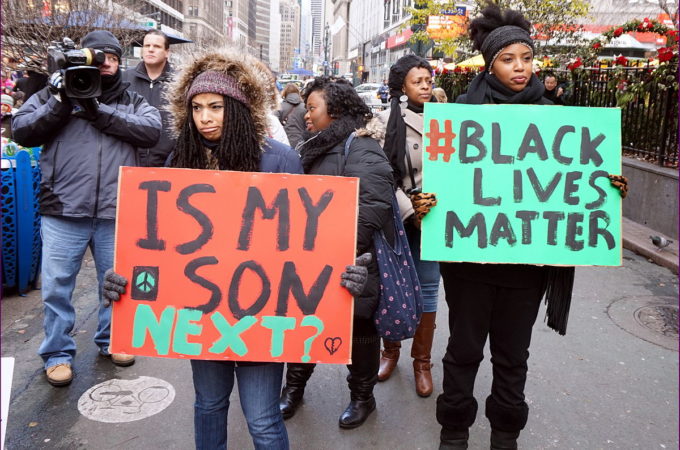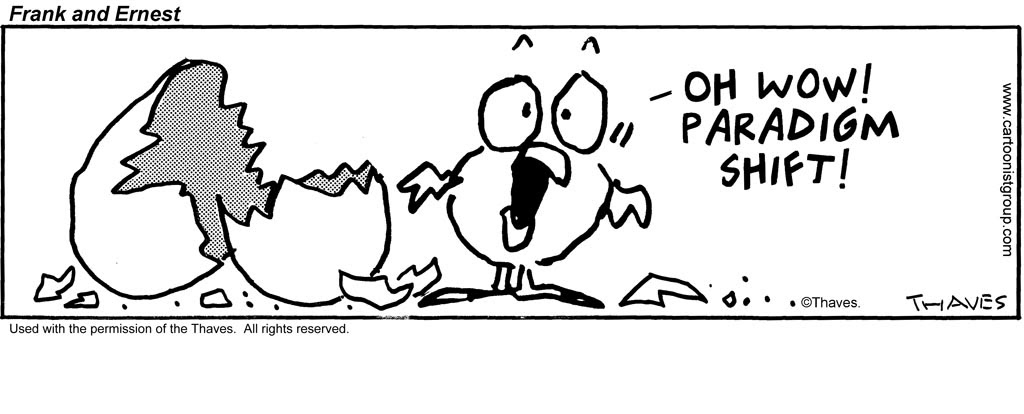How are narratives being perpetuated today? Photo by The All-Nite Images
In this series, we’ve been examining narratives: What they are, why they’ve become so pervasive, and why they are destructive—acting as a corrosive acid that eats away at the very pillars of a healthy, flourishing society.
Narratives are promoted and take root in the popular imagination as influential people (celebrities, academics, politicians, and journalists) use their platforms and institutions to perpetuate them, creating a bandwagon effect where the narrative is validated and reinforced; all the while marginalizing those who fail to get on board.
Narratives in the News Media
When the journalistic enterprise no longer believes that their primary duty is to pursue the truth, to doggedly pursue all sides of a story, weighing evidence, and not allowing their personal biases to cloud their reporting, journalism devolves into narrative perpetuation. Journalists and media leaders come to believe their primary responsibility is to promote and perpetuate whatever narrative they regard as important, all the while ignoring, suppressing, or minimizing stories, evidence, or perspectives that challenge their preferred narratives.
In the past several years, I’ve noticed a dramatic change in journalism in America. While journalists have always had their biases, they used to feel obligated to at least act as if they were objective fact-seekers and truth-tellers. Now, the pretense has evaporated. As journalists have absorbed the assumptions of postmodern relativism, they have lost confidence in the reality of objective truth, and are increasingly open about their advocacy of this or that narrative, justifying this approach with the claim that it is all for the public good. Unless thoughtful Christians are aware of this and filter what they are hearing from the news media accordingly, they may be duped into believing they are hearing an unbiased presentation of facts, or learning something true, when in fact, they are getting a highly distorted picture by being exposed only to the facts and evidence that align with whatever narrative the media wish to perpetuate. On any important issue, thoughtful Christians should rely on multiple media sources, and be open-eyed about the worldview and political biases of whatever media sources they prefer.
Narratives in Social Media
Discerning the truth requires a commitment to careful reasoning and critical thinking. It requires a willingness to prioritize reason over emotion. Social media, which has become the single most important source of information for people under 30, fosters just the opposite. As such, it is the ideal medium for perpetuating narratives.
 Social media relies on images and videos which tap into feelings rather than logic or reason. A brief Twitter remark can establish or reinforce a narrative, but it cannot facilitate in-depth reasoning and critical analysis. Holly Sheerer observes: “The speed of social media … give us impressions and a storyline far before facts have a chance to be uncovered. [Before we know what has happened] a situation is already tried and decided in the court of public opinion. Everyone knows the truth, they demand action, and then an immutable course is set. Viral videos, unreliable witnesses, and delays in releasing [facts from other sides of] a story allows one side to become conventional wisdom and accepted truth. After more reasoned information begins trickling out, it has a hard time competing with the visceral and impassioned narrative that has swept our social media feeds.”
Social media relies on images and videos which tap into feelings rather than logic or reason. A brief Twitter remark can establish or reinforce a narrative, but it cannot facilitate in-depth reasoning and critical analysis. Holly Sheerer observes: “The speed of social media … give us impressions and a storyline far before facts have a chance to be uncovered. [Before we know what has happened] a situation is already tried and decided in the court of public opinion. Everyone knows the truth, they demand action, and then an immutable course is set. Viral videos, unreliable witnesses, and delays in releasing [facts from other sides of] a story allows one side to become conventional wisdom and accepted truth. After more reasoned information begins trickling out, it has a hard time competing with the visceral and impassioned narrative that has swept our social media feeds.”
We are seeing this in the recent spate of social media reaction to police shootings. Two black men were shot by police in separate incidents in Louisiana and Minnesota. Celebrities, politicians and activists immediately took to social media to post partial video footage of the incidents and tweet their conclusion to their millions of followers: “It is open season on black men.” In other words, black men are being hunted down and killed in cold blood by racist cops. The point of these tweets isn’t to inform but to emotionally incite, and to perpetuate a highly distorted and highly dangerous narrative—one that now has such a grip on the imaginations of millions of people that facts no longer seem to matter.
Does it matter, for instance, that in 2015, of the 990 people shot dead by police in the United States, 93 were unarmed including 38 who were black? And of the 505 people shot dead by police thus far in 2016, 37 were unarmed and of them 13 were black? (Data from the Washington Post) According to Jason Riley, “More than 95% of black shooting deaths don’t involve the police, which would seem to undercut the notion that trigger-happy cops are hunting black men.” Recently the New York Times published the results of a study conducted by a black Harvard professor of economics. The results show that “when it comes to the most lethal form of force — police shootings – there is no racial bias.” The study’s author said “It was the most surprising result of my career.” It is surprising only because it runs counter to a well-established narrative.
Narratives in Academia
Higher education today has largely abandoned the quest for knowledge and truth. Universities have become factories for propagating narratives. All too often, professors have abandoned scholarship and have become ideologues. Preferred narratives are carefully protected, and any idea, facts or evidence that challenges them is ruthlessly attacked. According to Dennis Prager, today universities take drastic measures to prevent views and evidence that dissents from preferred narratives, everything “from ruining dissenters’ careers; penalizing dissenting students; not hiring dissenting professors; disinviting the few invited speakers with whom the majority differs; shouting down dissenting speakers; students and faculty occupying and taking over college administrators’ offices, etc.” To even present such contrary or dissenting evidence is now a “micro-aggression.” Students demand “safe spaces” where they can be protected from even being exposed to ideas, facts or evidence that run counter to their cherished narratives.
In a bracing recent admission from Nicholas Kristof of the New York Times: “We progressives believe in diversity, and we want women, blacks, Latinos, gays and Muslims at the table — er, so long as they aren’t conservatives … We’re fine with people who don’t look like us, as long as they think like us,” (italics added)—in other words, only as long as they don’t challenge our accepted narratives. Scratch below the nice-sounding inclusive language of our modern universities, and you’ll discover a hard, unyielding totalitarian impulse. Only narratives approved by those in power will be permitted in the modern university—and professors who don’t subscribe to these narratives—primarily conservatives, Republicans, and committed Christians—need not apply.
There are, of course, other drivers of the new narrative culture. For example, a number of activist organizations have cropped up in recent years, primarily to drive public opinion on a particular issue through the crafting and promotion of narratives.

Black Lives Matter is one example. It is almost entirely responsible for creating the narrative that the greatest danger facing young black men in America comes from racist cops and a structurally racist criminal justice system. This narrative was largely crafted around two incidents: The Treyvon Martin incident in Florida in 2012 and the Michael Brown incident in Ferguson, Missouri in 2014. Brown, an 18-year-old black man, was shot and killed by a police after robbing a convenience store and resisting arrest while trying to wrestle a gun out of the hands of a police officer. The narrative creators, however, chose to fabricate a different story: They wrote Brown into the narrative as an essentially innocent victim who was shot down in cold blood while trying to surrender to a racist cop while repeating “hands up, don’t shoot,” the now-famous rallying cry of Black Lives Matter.
The founders of Black Lives Matter are community organizers versed in “critical theory” and neo-Marxist social change tactics. They apparently had no reservations about perpetuating a highly distorted narrative based on an almost completely fabricated “interpretation” of events. Why not use lies if there is no such thing as absolute truth? Why not use deception if there is no transcendent source for morality? For the founders of Black Lives Matter and many other activist organizations, all that matters is the quest for power by means of narrative perpetuation.
- Scott Allen







2 Comments
Megan
October 15, 2016 - 11:35 amI’ve fallen a bit behind in reading the blog but it’s always so good. Thank you the reminder to think critically about what I’m reading/hearing.
Blessings,
Megan Burmester
YWAMLA
admin
October 21, 2016 - 1:33 amIt is always good to hear from you, Megan. Please greet my friends at the LA base.